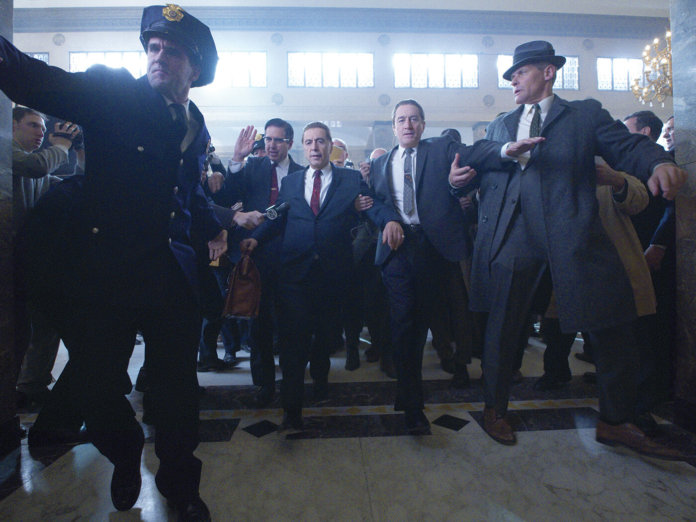Martin Scorsese has made movies about Jesus, Bob Dylan, Howard Hughes, Italian cinema, even the Dalai Lama and his own parents. But it’s the crime genre that the 76-year-old has most artfully made his own – perhaps because his interests run so much deeper than guns and machismo. The Irishman is a rich and thrilling return to this territory. It tells of one man’s absorption in the East Coast underworld of the 1950s, ’60s and ’70s, and offers echoes of Scorsese’s past mob tales, from the scrappy tussles of Mean Streets in the 1970s to the grand sweeps of Goodfellas and Casino in the 1990s. It comes with familiar faces – Robert De Niro, Joe Pesci, Harvey Keitel – and familiar beats: the rise followed by the fall; the effect of crime on families; the spiritual knock-on of killing. But there’s something wistful about The Irishman that means it has its own mood and momentum. It delivers a dose of dread and regret.
Let’s not pretend The Irishman doesn’t overflow with pleasures you want from a Scorsese mob movie: wicked humour; wordy conversations in dimly lit restaurant booths; sidewalk assassinations; musical coups; seductive period stylings. Also, like many Scorsese films, the shape of The Irishman is bold and playful, revealing itself over the movie. And there’s a lot to reveal as Scorsese takes three-and-a-half hours to tell of Frank Sheeran (De Niro), a Philadelphia war veteran and trucker drawn into the orbit of the mob and shady organised labour in 1950s America.
We first meet Sheeran elderly in a care home, reminiscing to someone unseen – presumably Carl Brandt, author of I Heard You Paint Houses, the 2004 book on which Steven Zaillian’s script is based. Those memories plunge us back to the 1950s when Sheeran falls in with mob boss Russell Bufalino (Joe Pesci), who introduces him to corrupt union chief Jimmy Hoffa (Al Pacino). The friendship between Sheeran and Hoffa is the heart of the movie – and the source of the film’s most tense stretch when Hoffa’s stock collapses in the mafia’s eyes in the mid-1970s and Sheeran is left to decide where his loyalties lie.
Scorsese has used a digital de-ageing process to let his actors play their characters across the decades, meaning we see De Niro as we recall him from his ’70s prime, or Pesci as he looked when dissecting funny in Goodfellas. They age before us; or get younger in flashback. The disruption works in the story’s favour: it reminds you of ageing, the deadly passage of time.
The de-ageing also matters less because the performances are so enveloping. Who can deny the buzz of seeing De Niro and Pesci back on screen together? Or Keitel, back in a Scorsese movie for the first time since Taxi Driver, even if his scenes as a senior mob boss are few? Pesci’s face is thinner than we remember from Goodfellas and more wrinkled, but the character is more stately than that hothead. De Niro and Pacino deliver their best work in years.
Examining a life of crime when the party’s over is nothing new for Scorsese – that’s the second half of Goodfellas. Yet he goes further. He hangs around not only until the party’s over – but until the lights are up, everyone is gone and the hangover has kicked in. This final stretch sets the film apart from Scorsese’s other crime tales and turns it into a requiem for gangster stories. Surely only a filmmaker with plenty of life behind him – and plenty of such stories – could make a film so entertaining and yet so solemn and sad.



